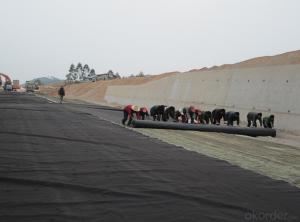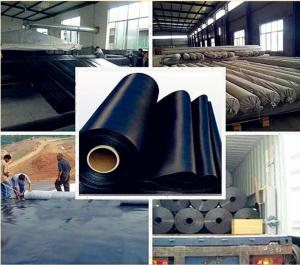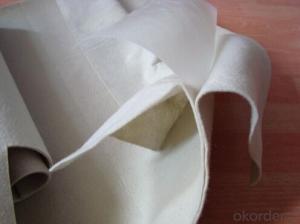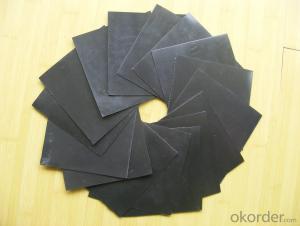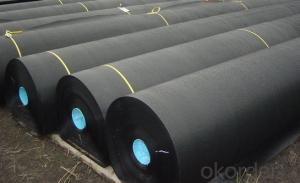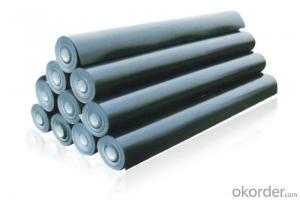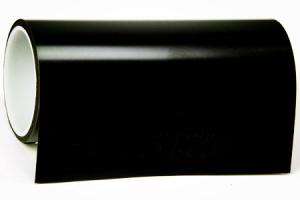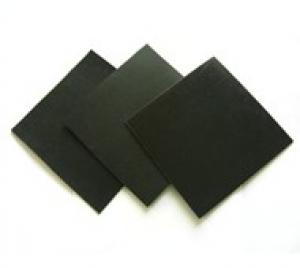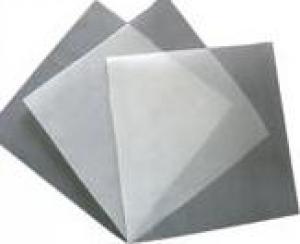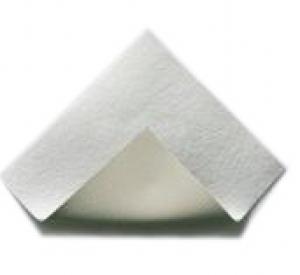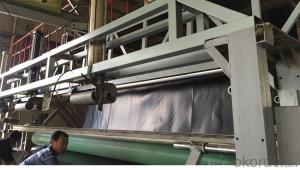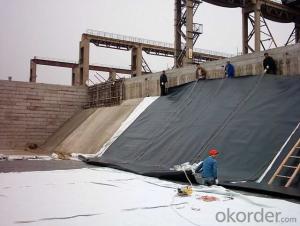1.0MM Hdpe Geomembrane for Landfill to Prevent the Waste Water
- Loading Port:
- Qingdao
- Payment Terms:
- TT OR LC
- Min Order Qty:
- 5000 m²
- Supply Capability:
- 500000 m²/month
OKorder Service Pledge
OKorder Financial Service
You Might Also Like
1.0MM Hdpe Geomembrane for Landfill Images
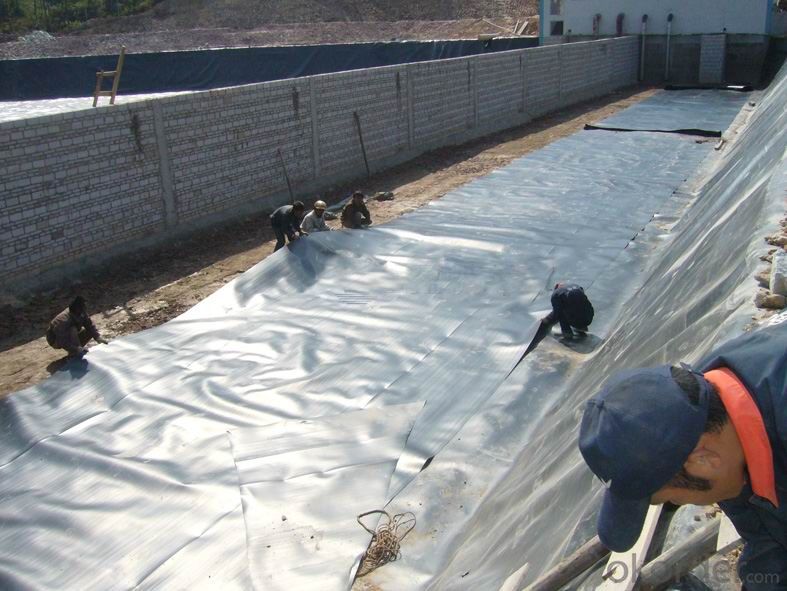

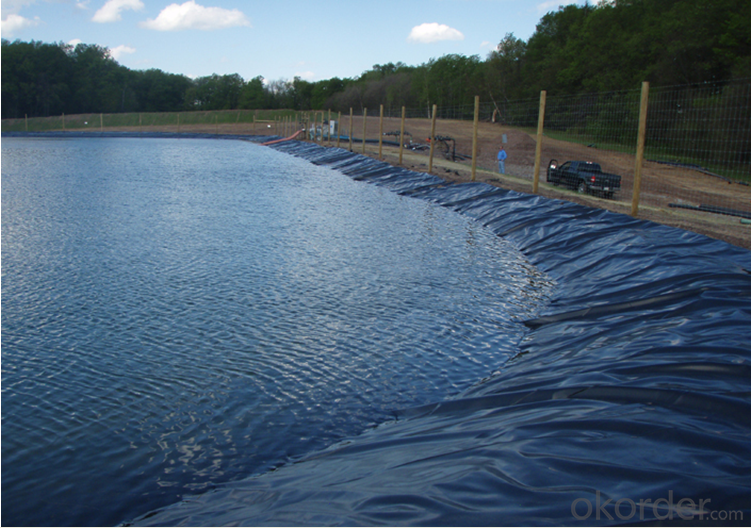
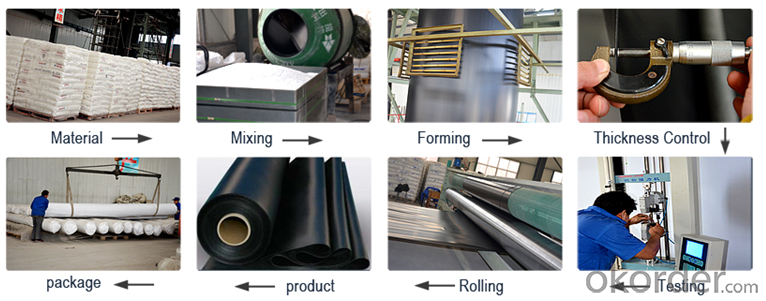
1.0MM Hdpe Geomembrane for Landfill Specification :
No. | Item | Value | ||||||
0.75mm | 1.00mm | 1.25mm | 1.50mm | 2.00mm | 2.50mm | 3.00mm | ||
1 | Density (g/cm3) | 0.939 | ||||||
2 | Yield strength (N/mm) | 11 | 15 | 18 | 22 | 29 | 37 | 44 |
Break strength (N/mm) | 20 | 27 | 33 | 40 | 53 | 67 | 80 | |
Yield elongation/% | 12 | |||||||
Break elongation/% | ≥450 | |||||||
3 | Tear resistance/N | 93 | 125 | 156 | 187 | 249 | 311 | 374 |
4 | Puncture resistance/N | 240 | 320 | 400 | 480 | 640 | 800 | 960 |
5 | Stress crack resistance/h | ≥1500 | ||||||
6 | Carbon black content/% | 2.0-3.0 | ||||||
Carbon black dispersion | Carbon black dispersion(only near spherical agglomerates) for 10 different views 9 in categories 1 or 2 and 1 in category 3 | |||||||
7 | Oxidative induction time/min | Standard OIT≥100 High pressure OIT≥400 | ||||||
8 | Oven aging at 85°C | |||||||
Standard OIT-% retained after 90days | 55 | |||||||
High pressure OIT-% retained after 90days | 80 | |||||||
9 | UV Resistance
| |||||||
Standard OIT retained after 1600hrs | 50 | |||||||
High pressure OIT retained after 1600hrs | 50 | |||||||
10 | -70°C Low temperature impact brittle property | Pass | ||||||
11 | Permeability g•cm(cm2)•pa | ≤1.0× | ||||||
12 | Dimensional stability/% | ±2 | ||||||
FAQ:
1. How about the delivery time?
Two weeks upon receipt of down payment.
2. What kind of payments do we accepted?
T/T, L/C, WesternUnion, MoneyGram.
3. What's are the MOQ?
Normally the MOQ is 5000 SQM in theory.
And we can provide you free samples for quality inspection.
4. Do you charge for the samples?
Accordeing to our company policy, the samples are freee, we only charge the freight fee. And we will return the freight fee in your second order.
5. Can you produce the product according to customers' requirements?
Sure, we are professional manufacturer, OEM and ODM are both welcome
- Q:Are geomembranes resistant to leachate chemicals?
- Yes, geomembranes are generally resistant to leachate chemicals. They are designed to provide a barrier against the migration of liquids and gases, including leachate chemicals. This resistance helps prevent contamination of surrounding soil and groundwater. However, the specific resistance may vary depending on the type and composition of the geomembrane material used.
- Q:HDPE construction process of HDPE geomembrane
- Clear substances that have hidden danger of puncture on bare base surface, completion and acceptance, etc. Acceptance of construction quality. ③Repair methods of damaged parts; welding form is double bead. 5. Recommendation 1, the maximum design water level. Ther is nooil pollution at joint. Planned duration is 3 days. Substances that can cause harm to anti-seepage film and constructors related to water proof materials. First, cut HDPE geomembrane into trumpet-shaped pipe sleeve according to the diameter of leachate in dam. 50×4m, do not wipe in hands. Bond is made up of asphalt latex paint, otherwise, set aside telescopic deformation caused by changes of temperature. ②Operating temperature of sweat soldering is 280 -300℃. ②Water resistance of bridge foundation. Weld after treatment. 4, Need latitudinal splicing so as not to damage the membrane surface. Dew: 5% to 8%.
- Q:What is the difference between a geomembrane and a geotextile?
- A geomembrane is a synthetic material used for containment and barrier purposes, typically made of impermeable materials like plastic or rubber. It is designed to prevent the movement of fluids or gases and is commonly used in applications such as landfill liners or pond liners. On the other hand, a geotextile is a permeable fabric made from synthetic or natural fibers. It is used for filtration, separation, and reinforcement purposes in civil engineering and construction projects. Geotextiles allow water to pass through while preventing the migration of fine particles, providing stability and drainage in applications like road construction or erosion control. In summary, the main difference between a geomembrane and a geotextile lies in their function and material composition. While geomembranes are impermeable barriers used for containment, geotextiles are permeable fabrics used for filtration and reinforcement.
- Q:The service life period of geomembrane
- Because the composite geomembrane has oxidation resistance, some files in some companies extend the time limit the previous Soviet Union BCH07-74 "Notice for the earth-rockfill application of polyethylene dam seepage control structure" stipulates polyethylene geomembrane can be used for buildings with limit over 50 Ollie Linz company publish papers on polypropylene composite geo-membrane geotechnique composite material character, whose conclusion is: Polypropylene 15 on-site application experience shows that the compound has high stability; fabric damage construction; laying has no change;...... Expected to exceed 100 stability diagram"
- Q:Characteristics of geomembrane
- Therefore, the service life period of composite geomembrane is sufficient to meet the service life period of the dam seepage-proof requirement., Ethylene / vinyl acetate copolymer (EVA), mainly including polyvinyl chloride (PVC) .hiphotos.2m added stabilizer polyethylene film, whose years of working is 30 to 40 years under sewage conditions, with small proportion, low temperature resistance, corrosion resistance, good extensibility. Composite geomembrane is a kind of soil engineering impermeable material taking plastic film as a substrate, and combined with non-woven fabrics. The service life period of geomembrane, good anti-frost?property.
- Q:How do geomembranes contribute to the prevention of slope instability?
- Geomembranes contribute to the prevention of slope instability by acting as a barrier that effectively controls water flow and seepage. By being installed within the slope, geomembranes intercept and redirect water, preventing it from infiltrating the soil and causing erosion. This helps to maintain the stability of the slope and prevents potential landslides or slope failures.
- Q:Why pvc plastic wrap smells?
- Plastic wraps and freshness?protection?packages are plastic packaging products often used for preserving fresh food, and they are inseparable from many families. PVC plastic wrap, is also known for polyvinyl chloride. Because of the need of manufacturing technique, a lot of plasticizers will be added in while producing PVC plastic wraps, that is, we usually say plasticizer. When PVC plastic wrap is being heated or in touch with fatty foods, the plasticizer contained in PVC plastic wrap would easily be separated out, and follow the food into the human body, causing some harm to the human body, and even cancer. However, there is no problem when PVC plastic wrap is used for preservation of fresh fruit and vegetable.
- Q:Can geomembranes be used in biogas storage systems?
- Yes, geomembranes can be used in biogas storage systems. Geomembranes are highly effective in preventing the escape of biogas and minimizing the risk of leaks or contamination. They provide a reliable barrier that can withstand the pressure and corrosive nature of biogas, making them a suitable choice for biogas storage applications.
- Q:What are the applications of geomembranes?
- Geomembranes have a wide range of applications in various industries and environmental projects. They are commonly used as liners in landfills, preventing the leakage of contaminants into the soil and groundwater. Additionally, geomembranes are utilized in the construction of reservoirs and dams to ensure water containment. They are also employed in mining operations to contain and manage wastewater and hazardous materials. In agricultural practices, geomembranes are used for pond liners and irrigation canal liners. Furthermore, they find applications in civil engineering projects, such as tunnels, underground storage facilities, and wastewater treatment plants, to provide a barrier against seepage and corrosion.
- Q:How do geomembranes contribute to the prevention of soil erosion in construction sites?
- Geomembranes contribute to the prevention of soil erosion in construction sites by acting as a barrier between the soil and the surrounding environment. These impermeable sheets are placed on the surface of the soil, preventing water from infiltrating and carrying away the topsoil. This helps to maintain the stability of the construction site, reducing the risk of erosion and preserving the integrity of the soil.
1. Manufacturer Overview |
|
|---|---|
| Location | |
| Year Established | |
| Annual Output Value | |
| Main Markets | |
| Company Certifications | |
2. Manufacturer Certificates |
|
|---|---|
| a) Certification Name | |
| Range | |
| Reference | |
| Validity Period | |
3. Manufacturer Capability |
|
|---|---|
| a)Trade Capacity | |
| Nearest Port | |
| Export Percentage | |
| No.of Employees in Trade Department | |
| Language Spoken: | |
| b)Factory Information | |
| Factory Size: | |
| No. of Production Lines | |
| Contract Manufacturing | |
| Product Price Range | |
Send your message to us
1.0MM Hdpe Geomembrane for Landfill to Prevent the Waste Water
- Loading Port:
- Qingdao
- Payment Terms:
- TT OR LC
- Min Order Qty:
- 5000 m²
- Supply Capability:
- 500000 m²/month
OKorder Service Pledge
OKorder Financial Service
Similar products
New products
Hot products
Hot Searches
Related keywords
